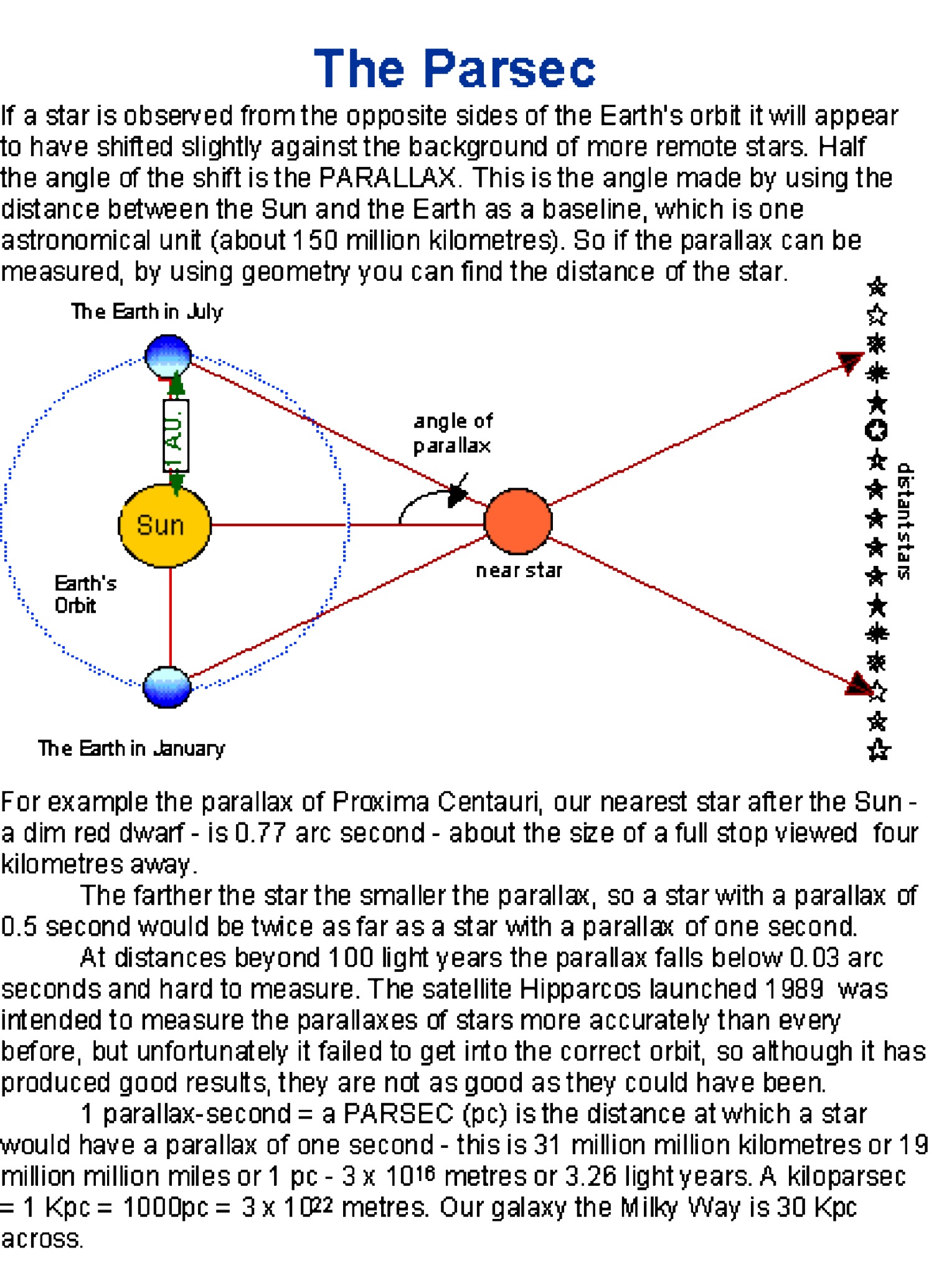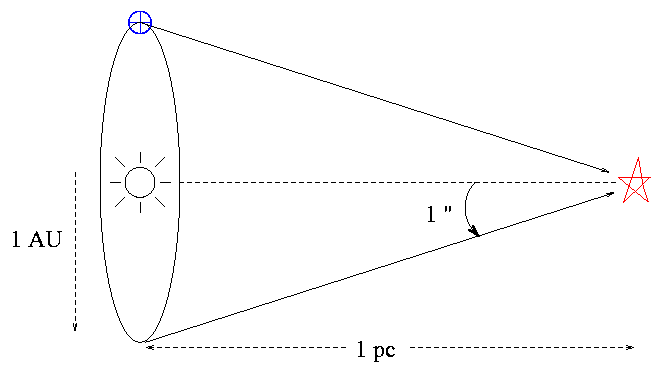

The answer seems to be that, when astronomers first started measuring stellar distances using the parallax method, they simply presented their results in terms of “a parallax of X seconds” rather than converting to light-years. So why would anyone want to use parsecs instead? The light-year even has a usefulness that goes beyond simple measurement, because it tells us that when we observe an object X light-years away, we’re seeing as it was X years in the past. It’s simply the distance that light travels in a year, and it’s been in use since at least 1838. By contrast, the light-year is much easier to understand. In fact, real stellar parallaxes are smaller than that, meaning that their distances are always greater than a parsec.Īs logical as the definition of a parsec is, it’s still likely to come across as unnecessarily complicated to most people. So that’s where the parsec comes from: it’s the hypothetical distance at which a star would show a parallax of exactly one second. Measuring that angle and then halving it (because we have two equal and opposite offsets relative to the Sun) gives us the star’s parallax. The star will appear to have moved through a small angular distance relative to the background objects. Then six months later, when the Earth is on the other side of the sun, they take another photograph of the same bit of sky, according to NASA.
PARSEC UNIT OF MEASUREMENT PATCH
They take a photograph of a patch of sky containing the star they’re interested in and other, more distant objects such as galaxies. The same principle enables astronomers to measure the distance to nearby stars. If you could measure that angular difference, then knowing the distance between your eyes enables you to calculate the distance to the pencil. That’s the parallax effect, and it happens because the angular direction to the pencil is slightly different when seen by your left and right eyes. Parallax can be demonstrated by looking at a pencil with one eye or the other. If you hold a pencil up at arm’s length and alternately close your left and right eyes, you’ll notice that the pencil appears to move left and right relative to more distant objects even if you keep it perfectly stationary.

These small angles help astronomers measure large distances using something called the parallax effect. Related: Sounds in space: What noises do planets make? Arcseconds and the parallax effectĪstronomers use arcseconds to measure very small angles, with 3,600 seconds making up one degree, just as there are 3,600 seconds in one hour.

The term parsec is a combination of “parallax” and “arcsecond,” which derives from the use of triangulation when measuring the distance between two stars. In fact, one parsec is approximately 3.26 light-years, or almost 19 trillion miles (31 trillion km), according to the California Institute of Technology (opens in new tab) (Caltech). Sci-fi franchises such as “Star Wars” have been known to misuse the word “parsec”, mistakenly describing it as a measurement of time or speed.
PARSEC UNIT OF MEASUREMENT HOW TO
COVID-19 Portal While this global health crisis continues to evolve, it can be useful to look to past pandemics to better understand how to respond today.Student Portal Britannica is the ultimate student resource for key school subjects like history, government, literature, and more.From tech to household and wellness products. Britannica Explains In these videos, Britannica explains a variety of topics and answers frequently asked questions.This Time in History In these videos, find out what happened this month (or any month!) in history.#WTFact Videos In #WTFact Britannica shares some of the most bizarre facts we can find.Demystified Videos In Demystified, Britannica has all the answers to your burning questions.Britannica Classics Check out these retro videos from Encyclopedia Britannica’s archives.


 0 kommentar(er)
0 kommentar(er)
